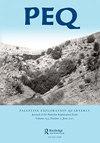The Unique Specialised Economy of Judah under Assyrian Rule and its Impact on the Material Culture of the Kingdom
IF 0.8
2区 历史学
0 ARCHAEOLOGY
引用次数: 4
Abstract
ABSTRACT The geography of Judah is unique among the territorial kingdoms of the southern Levant, featuring four distinct regions with the potential for exploitation in different economic strategies. In the Iron IIB the vassal kingdom experienced a dramatic economic transformation directed by the Assyrian empire, from traditional Mediterranean subsistence to specialised economy based on its four zones: viticulture in the highlands, oleo-culture in the Shephelah, services to the Arabian trade in the Beersheba Valley and date and exotic plant groves in the Dead Sea Valley oases. This high-risk/high-gain system may clarify the development of advanced administration, which, in turn, explains the unique features in the material culture of Judah compared to neighbouring kingdoms: The system of stamped handles and weights and the proliferation of scribal activity. The division of the kingdom into districts, as portrayed in Josh 15, is connected to this reality, and hence probably originated slightly earlier than conventionally argued.亚述统治下犹大独特的专业经济及其对王国物质文化的影响
在黎凡特南部的领土王国中,犹大的地理位置是独一无二的,它有四个不同的区域,具有不同经济战略的开发潜力。在铁器ii时期,这个附属国在亚述帝国的指导下经历了一次戏剧性的经济转型,从传统的地中海自给自足转变为基于四个区域的专业经济:高地的葡萄种植、示非拉的油棕种植、贝尔谢巴山谷的阿拉伯贸易服务以及死海山谷绿洲的枣树和异国情调的植物林。这种高风险/高收益的系统可能阐明了高级管理的发展,这反过来解释了犹大与邻国相比物质文化的独特特征:印柄和重量的系统以及抄写活动的扩散。正如《约书亚记》15章所描述的那样,将王国划分为地区与这一现实有关,因此可能比传统观点的起源要早一些。
本文章由计算机程序翻译,如有差异,请以英文原文为准。
求助全文
约1分钟内获得全文
求助全文

 求助内容:
求助内容: 应助结果提醒方式:
应助结果提醒方式:


